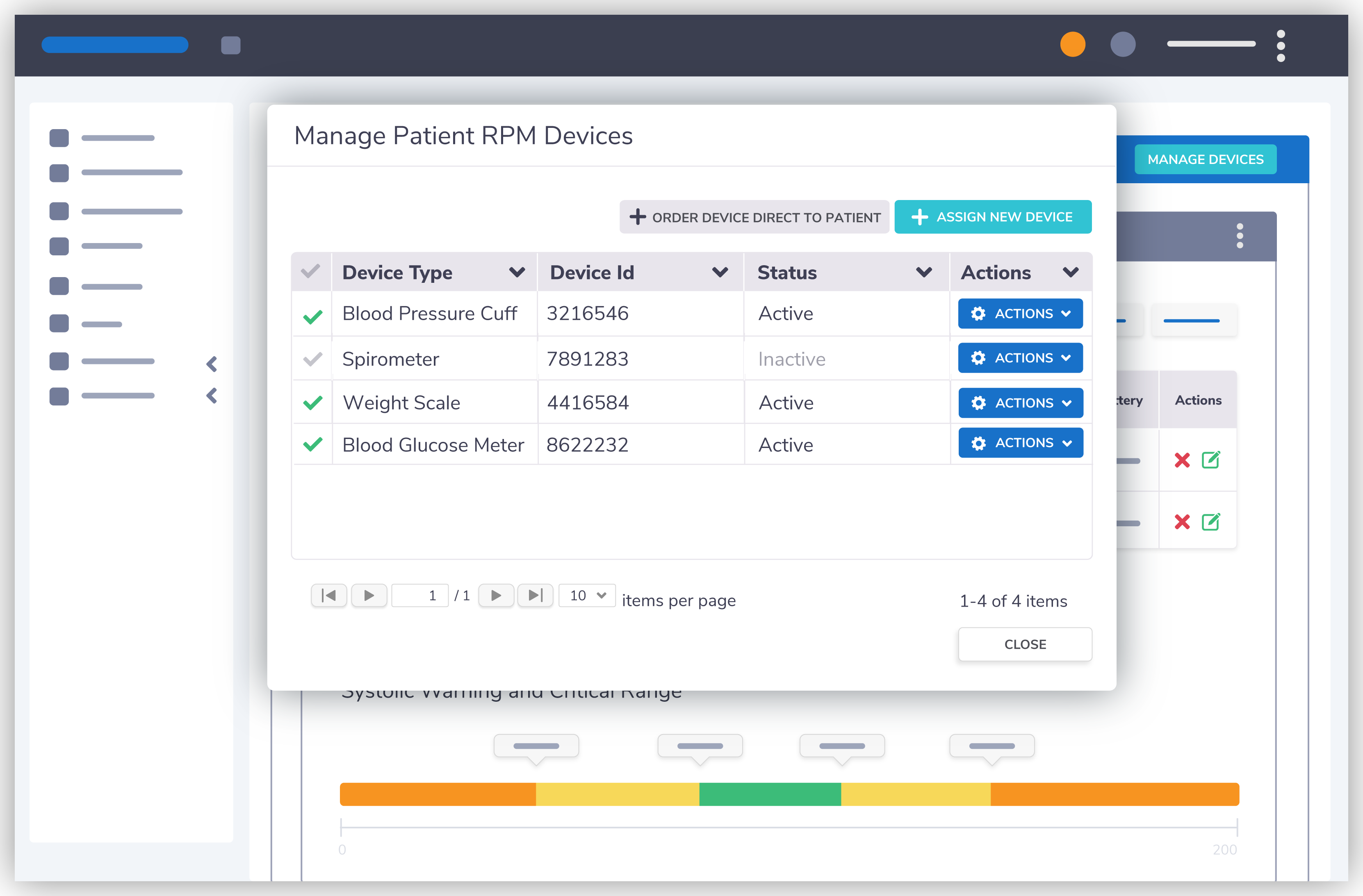Leading Remote Patient Monitoring Software: Boost Medical Care Performance
Leading Remote Patient Monitoring Software: Boost Medical Care Performance
Blog Article
The Future of Health Care: Remote Person Keeping Track Of Streamlined
As health care proceeds to evolve, one area that holds immense guarantee is remote individual surveillance. With a focus on boosting client outcomes and improving medical care distribution, remote surveillance is poised to transform the sector.
Advantages of Remote Patient Monitoring
Remote individual surveillance provides a plethora of benefits for both medical care service providers and people alike. Additionally, remote individual monitoring improves the total quality of treatment by giving a more detailed and holistic sight of clients' health and wellness standing beyond conventional in-person brows through.
Furthermore, remote individual surveillance can lead to enhanced individual end results and complete satisfaction. Individuals can appreciate the convenience of getting care in the convenience of their very own homes while still recognizing that their wellness is being closely kept track of. This can lead to boosted person involvement and adherence to treatment plans, eventually causing far better wellness end results. In addition, remote monitoring can reduce the need for frequent hospital gos to, reducing health care expenses for both carriers and people. On the whole, the benefits of remote individual tracking are clear, making it a useful device in contemporary health care delivery.
Technology Driving Remote Surveillance
In the realm of modern medical care, technological advancements play a crucial function in driving the evolution and performance of remote individual monitoring. The combination of ingenious modern technologies such as wearable gadgets, mobile applications, and cloud-based systems has actually revolutionized the method doctor from another location manage and check client wellness - best remote patient monitoring software. These technologies allow continual real-time tracking of essential signs, medicine adherence, and various other essential wellness information, permitting prompt treatments and personalized care strategies
One key innovation driving remote tracking is the Net of Things (IoT), which allows smooth connection between medical gadgets and medical care systems. IoT tools such as smartwatches and wireless sensors send and collect client information to central systems, facilitating remote monitoring from anywhere in the world. Expert system (AI) and machine learning algorithms even more improve remote surveillance by assessing substantial amounts of patient data to spot patterns, anticipate health and wellness patterns, and alert health care suppliers to possible concerns.
Influence on Medical Care Distribution
With the assimilation of advanced innovations driving remote individual tracking, the effect on health care shipment is becoming transformative and increasingly extensive. Remote client surveillance permits doctor to provide more tailored and positive care to patients, leading to boosted health and wellness results and reduced hospital admissions. By from another location tracking crucial signs, symptoms, and medicine adherence, health care professionals can interfere early, stopping problems and boosting the general quality of treatment.
Additionally, remote monitoring boosts access to healthcare solutions, particularly for people in rural or underserved areas. People can get continuous tracking and support from their homes, removing the requirement for constant in-person check outs. This not only conserves time and reduces expenses for both clients and medical care facilities however also lessens the risk of exposure to transmittable illness, an essential factor to consider in the current medical care landscape.
Additionally, remote person tracking makes it possible for health care carriers to much better focus on and assign sources care based on Visit This Link real-time information. By recognizing high-risk people and intervening immediately, medical care delivery ends up being more effective and reliable, eventually causing a more sustainable and patient-centered health care system.
Improving Patient End Results

Furthermore, RPM enables positive administration of chronic conditions, decreasing the possibility Our site of acute exacerbations and medical facility readmissions. Clients benefit from increased convenience and comfort, as they can obtain treatment in their very own homes while remaining linked to their doctor. This continuous surveillance not just improves individual contentment yet likewise fosters a feeling of empowerment and involvement in their very own health and wellness management.
Future Trends in Remote Monitoring
Embracing sophisticated modern technologies in remote individual tracking is shaping the future landscape of medical care distribution. The future patterns in remote monitoring are anticipated to reinvent the method healthcare is given, making it a lot more patient-centric and reliable. One considerable fad is the boosted use of wearable tools and sensors to accumulate real-time data, enabling doctor to monitor individuals continuously without the demand for frequent in-person visits. These gadgets can track vital indications, medication adherence, and task levels, supplying an extensive sight of the client's wellness condition.

Moreover, telehealth systems are becoming a lot more innovative, allowing for online appointments, remote medical diagnosis, and remote client keeping official source an eye on done in one integrated system (remote patient monitoring platform). This holistic technique to remote surveillance is streamlining health care shipment, boosting person complete satisfaction, and eventually, boosting overall high quality of treatment
Verdict
Finally, remote patient monitoring uses countless benefits in medical care shipment, driven by improvements in innovation. It has the potential to improve individual outcomes and change the means healthcare is delivered. Future patterns in remote monitoring will remain to shape the landscape of health care, offering opportunities for more reliable and individualized individual care.
Remote patient monitoring offers a wide variety of benefits for both healthcare service providers and patients alike. In addition, remote individual tracking enhances the total high quality of care by providing an extra detailed and holistic view of people' health and wellness status past standard in-person check outs.
Furthermore, remote person tracking can lead to improved individual outcomes and contentment. Remote individual monitoring enables healthcare carriers to provide even more individualized and proactive treatment to patients, leading to enhanced wellness results and reduced healthcare facility admissions. Remote patient monitoring (RPM) plays a significant function in boosting client end results by providing constant, real-time information that enables health care providers to step in quickly and change therapy plans as needed.
Report this page